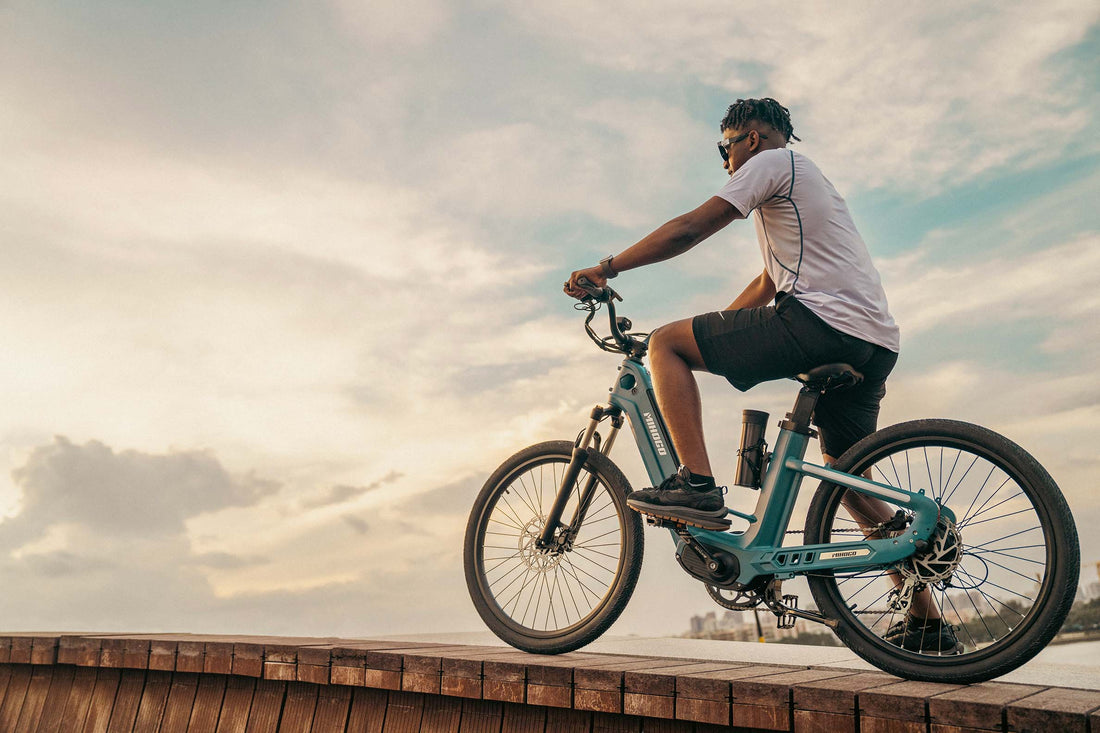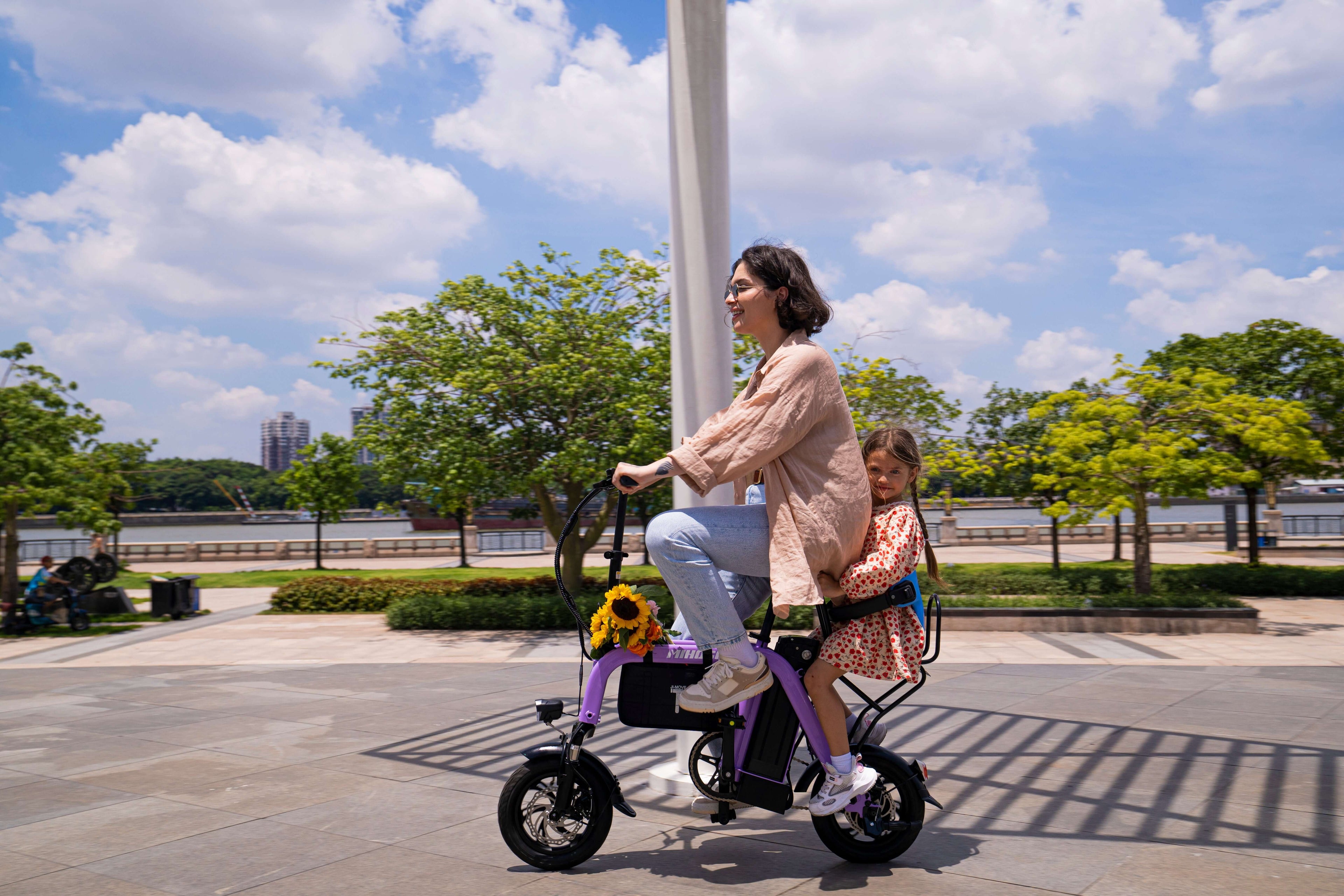Why Ebike Riders Need Different Hydration Strategies
Electric bike cycling presents distinct hydration requirements compared to traditional cycling. While the 750W motor power of your Mihogo ONE Utility or Air750 Max provides significant assistance, riders still generate substantial heat and lose fluids through sweat, especially during longer rides that can extend up to 167 miles on a single charge.
The extended range capabilities of Mihogo ebikes mean riders often stay out longer than traditional cyclists. A study published in Medicine and Science in Sports and Exercise found that cyclists who followed predetermined hydration plans performed significantly better than those who drank only when thirsty.
The Science Behind Optimal Cycling Hydration
Research indicates that cyclists should aim to consume 500-750ml of fluid per hour, even in cooler conditions. However, ebike riders using powerful motors like the 750W systems in Mihogo's premium models may need to adjust this baseline upward due to:
- Increased ride duration: With ranges exceeding 160 miles, hydration becomes critical
- Motor heat exposure: Proximity to electric motors can increase core body temperature
- Variable terrain confidence: Electric assistance allows tackling more challenging routes
- Extended comfort zones: Riders venture further from water sources
The key is understanding that dehydration of just 2% body weight can significantly impact performance, while some research suggests even 1% loss affects muscle endurance and power.
Hydration Guidelines by Mihogo Model and Ride Type
Short Urban Rides (Mihogo Mini - Up to 62 Miles)
For city commuting on your Mihogo Mini with its efficient 350W motor, basic hydration needs include:
- Pre-ride: 250-300ml of water 30 minutes before departure
- During ride: One standard cycling bottle (550-650ml) for rides under 90 minutes
- Post-ride: Immediate rehydration with 150% of fluid lost through sweat
The Mini's compact 62-mile range makes it perfect for daily commuting, where convenient hydration stops are readily available.
Medium Distance Adventures (Mihogo RX 2.4 - 40 Mile Range)
The folding Mihogo RX 2.4 with its 500W motor bridges urban and adventure riding. For its 40-mile range capacity:
- Hydration rate: 400-600ml per hour of active riding
- Bottle strategy: Two standard bottles for maximum range rides
- Electrolyte consideration: Add electrolytes for rides exceeding 60 minutes
Long-Range Touring (Mihogo Air750 Max & ONE Utility)
For the flagship models capable of 121-167 mile adventures, hydration becomes critical:
- Pre-loading strategy: 500-750ml of electrolyte solution 2 hours before departure
- Hourly intake: 600-800ml per hour during active periods
- Total capacity needed: 4-6 liters for maximum range adventures
- Hydration pack recommendation: Essential for rides exceeding 80 miles
Choosing the Right Hydration Setup for Your Mihogo
Standard Bottle Cages
Most Mihogo models accommodate standard cycling bottles in traditional cage mounts. For optimal compatibility:
- Size selection: 550-650ml capacity bottles work best with all Mihogo frame geometries
- Material considerations: Insulated bottles for temperature control during long rides
- Flow rate priority: High-flow caps for quick hydration without stopping
Hydration Pack Integration
For extended adventures on the Air750 Max or ONE Utility, hydration packs with 2-3 liter capacity provide optimal water storage while distributing weight evenly. This setup works particularly well with Mihogo's comfortable riding positions.
Frame Bag Hydration
The utility-focused Mihogo ONE pairs excellently with frame bags that include hydration reservoirs, maximizing the 167-mile range potential while maintaining balanced weight distribution.
Electrolyte Management for Ebike Adventures
When exercising for extended periods, you lose not just water but crucial salts including sodium, calcium, magnesium, and potassium. For Mihogo riders tackling longer adventures:
The 90-Minute Rule
For rides under 90 minutes (perfect for Mihogo Mini and shorter RX 2.4 adventures), plain water suffices. Beyond this threshold, electrolyte replacement becomes essential.
High-Performance Mixing
For maximum range adventures on the Air750 Max or ONE Utility:
- Isotonic solutions: 6-8% carbohydrate concentration optimizes absorption
- Sodium content: 200-300mg per 500ml for extended rides
- Natural alternatives: Add a pinch of salt to diluted fruit juice for DIY electrolyte drinks
Temperature and Weather Adaptations
Hot Weather Riding
Summer adventures on your Mihogo require increased vigilance:
- Increased intake: Scale up to 750-1000ml per hour in temperatures above 80°F
- Pre-cooling strategies: Consume cold fluids before departure
- Insulated bottle benefits: Maintain drink temperature for better consumption rates
Cold Weather Considerations
Winter riding on electric bikes presents unique challenges:
- Warm fluid benefits: Room temperature or warm fluids prevent core temperature drops
- Consistent intake: Cold weather masks thirst sensations
- Battery considerations: Cold affects both your body and your Mihogo's battery performance
Advanced Hydration Strategies for Long-Range Mihogo Adventures
The Professional Approach
Professional cyclists maintain carbohydrate intake of 30-60g per hour during extended efforts, a strategy that applies to ambitious Mihogo riders tackling century-plus adventures.
Hydration Timing Protocols
For maximum range adventures on the Air750 Max (121 miles) or ONE Utility (167 miles):
- Pre-ride hydration: Begin 2-3 hours before departure
- Regular intervals: Every 15-20 minutes during active periods
- Recovery hydration: 150% replacement of lost fluids post-ride
Technology Integration
Modern hydration monitoring apps can integrate with fitness computers commonly used by serious ebike adventurers, providing real-time hydration reminders based on effort level, temperature, and ride duration.
Common Hydration Mistakes to Avoid
Over-Hydration Risks
While dehydration poses obvious risks, consuming excessive plain water can lead to hyponatremia, particularly during ultra-long adventures possible with Mihogo's extended-range models.
Inadequate Pre-Ride Preparation
Many cyclists begin rides already partially dehydrated after sleeping, emphasizing the importance of morning hydration before departure.
Ignoring Individual Variation
Sweat rates vary dramatically between individuals. Heavier riders or those with higher metabolic rates may need significantly more fluid than standard recommendations suggest.
Mihogo Model-Specific Hydration Accessories
Mihogo Mini Hydration Setup
The compact design accommodates:
- Single bottle cage mounting
- Compact hydration packs for extended urban exploration
- Handlebar-mounted bottle holders for easy access
RX 2.4 Folding Convenience
The folding design requires:
- Removable bottle systems for compact storage
- Magnetic bottle holders compatible with the folding mechanism
- Compact electrolyte storage solutions
Air750 Max & ONE Utility Adventure Ready
These flagship models support:
- Dual bottle cage configurations
- Large capacity hydration pack integration
- Frame bag hydration systems for touring setups
Conclusion: Optimizing Your Mihogo Experience
Proper hydration transforms your Mihogo ebike experience from good to exceptional. Whether you're commuting 20 miles daily on the Mini, exploring 40-mile loops with the RX 2.4, or embarking on epic 167-mile adventures with the ONE Utility, understanding your hydration needs ensures optimal performance, safety, and enjoyment.
Remember that your Mihogo's impressive range capabilities mean hydration planning becomes even more critical than traditional cycling. Start with the guidelines provided, but always adjust based on personal experience, weather conditions, and individual physiology.
For more insights on maximizing your Mihogo experience, explore our comprehensive guides on ebike maintenance, battery optimization, and adventure planning to ensure every ride exceeds expectations.
External Resources:








